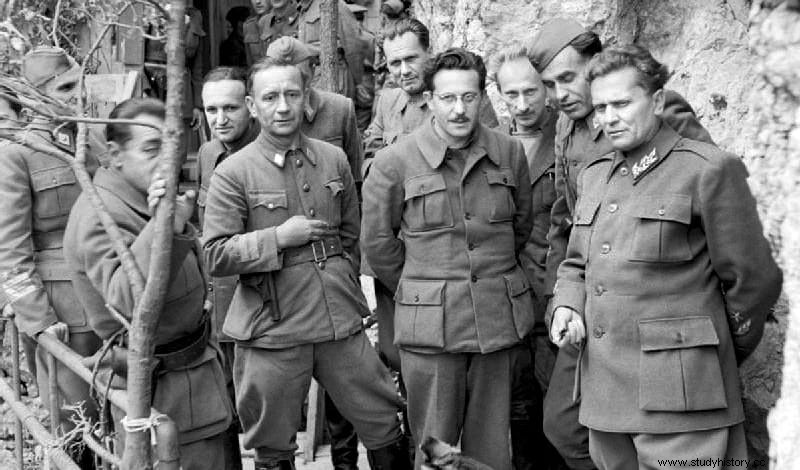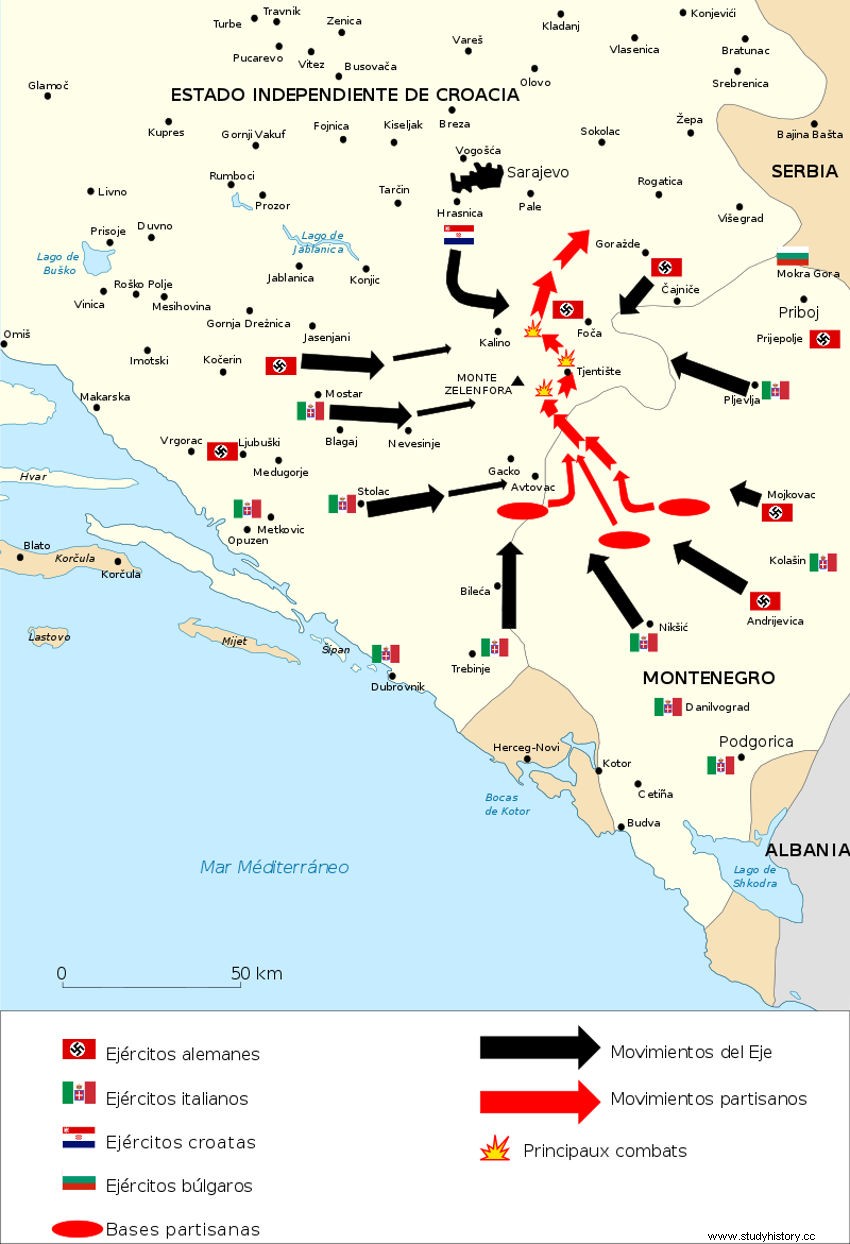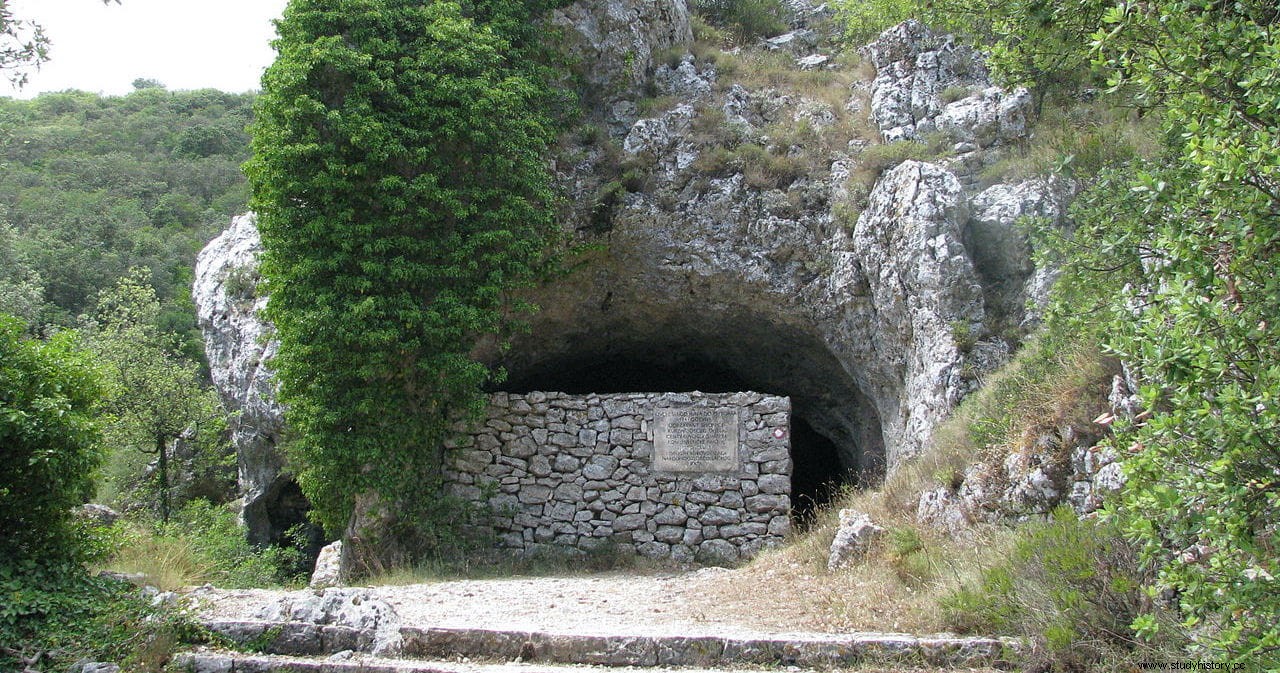If someone believes that refugee camps are a sad reality of our days, they are mistaken because, unfortunately, there is little left to invent in terms of human catastrophes in times of war. A good example could be El Shatt, a camp located in Egypt that did not take in Palestinians, Lebanese or Syrians from recent conflicts, but Croats in the midst of World War II.
In June 1943 the Axis powers launched an offensive on the Balkans known as Operation Schwarz, with the aim of securing the Adriatic coast in anticipation of a possible enemy landing and, incidentally, putting an end to the annoying Yugoslav partisans (of done, on site also received the name of Fifth Antipartisan Offensive).
The ordinal refers to the fact that, in reality, a previous attempt had already been carried out, Operation Weiss, to put an end to the adventures of Tito and his guerrillas in Croatia. That attempt failed because while the Germans wanted a forceful and definitive extermination of both partisans and chetniks (Serbian guerrillas of monarchical and conservative ideology), the Italians preferred to agree on the latter to confront them with the others; the dissensions around that point favored Tito's escape.

This time the campaign was carried out ruthlessly on the German side (supported by Italians, Bulgarians, ustachas -Croatian fascist militiamen- and the Croatian National Guard), burning villages, massacring the civilian population and even murdering a column of two thousand wounded who were evacuated from the Sujetska River, where the most important battle had been fought, but also typhus wreaked havoc.
Despite the fact that Tito once again managed to slip away under cover of the difficult Balkan terrain, the victory went to the Axis, which established a tight control over the region in charge of the SS. A turning point occurred in September when the Allies liberated Italy, bringing down the Mussolini regime and turning the country against its former partners. The transalpine troops left Yugoslavia and the partisans thus gained a breath of oxygen that allowed them to reorganize.

However, things were not as easy as they seemed. The Wehrmacht set up a defensive line called Gustav which held up the enemy advance for months and caused huge casualties. This favored a new Teutonic offensive in what was the Italian Governorate of Dalmatia, practically empty of transalpines because in September 1943, after the fall of Mussolini, Tito's partisans shot them en masse in what is known as the Massacre of the Foibe (the foibe they were sinkholes that were used ancestrally to throw executed bodies).
When the Germans, faced with a power vacuum, took control of the region, tens of thousands of civilians fled, fearing reprisals. About twenty-eight thousand people from the towns of Vodice, Hvar, Vis, Korčula, Ravni Kotari, Bukovica and, above all, Makarska, took refuge on the Island of Vis, a piece of land (ninety square kilometers) on the Adriatic coast , more or less at the height of the city of Split.
Vis had been occupied by Italy in 1941, which imposed its language and a process of Italianization through force and intimidation by paramilitary groups. Germany was unable to recover it and it was precisely there, in an island cave called Tito's Cave today, where the partisan leader hid after the aforementioned Operation Schwartz and where he later established his headquarters. 
Since it was the only point in all of Croatia that escaped Nazi rule, the elderly, women and children, cared for by the British army, were also concentrated in its small area. A whole logistical problem that was solved with the decision to move those people to a more appropriate place. The initially chosen place was southern Italy and the refugees were housed in Bari and Taranto. But the peninsula had not yet been fully conquered and there was a danger of bombardment, so it was advisable to move them a little further away.
In this way, the El Shatt refugee camp was born, in the north of the Egyptian peninsula of Sinai, near the Suez Canal. It was a complex divided into five areas and quite precarious, since there were no architectural structures, only tents, each of which had to house two families. Even so, the Dalmatians tried to lead as normal a life as possible, organizing workshops, schools for children, a laundry, a church, an orchestra with a choir... They even published press:Naš List (Our newspaper).
They arrived in the summer of 1944 and remained in this harsh land until 1946. Hard because of the heat of the desert, the scarcity of water and the consequent diseases that caused considerable mortality, especially among children. In addition, the treatment of the British soldiers who guarded them was very strict, allowing them to leave the camp only with express authorization, almost as if they were prisoners instead of refugees.
In short, eighteen severe months during which, however, life and hope made their way; The five thousand marriages and the six hundred and fifty births that took place at that time attested to this. At the beginning of 1946, with the end of the war, they were able to return to their homes in Yugoslavia. The camp was built but there remains, as a memory, a cemetery with the eight hundred twenty-five graves of those who were left behind (unfortunately badly damaged in the Arab-Israeli war) and a monument erected in their memory in 2003.
